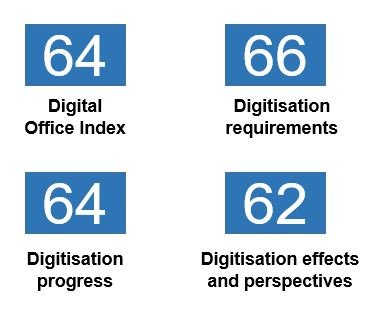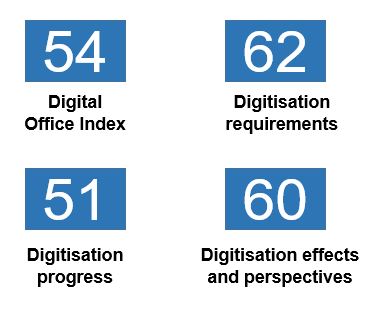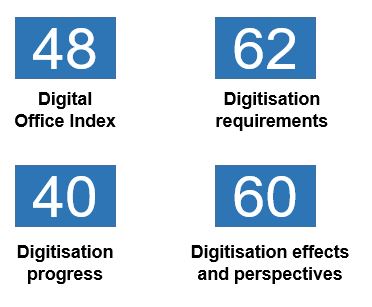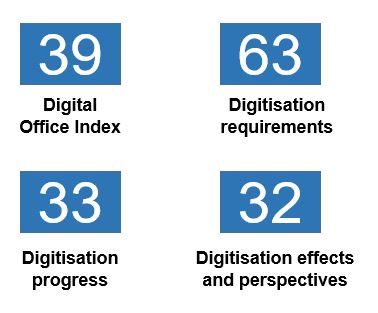The Bitkom Digital Office Index (DOI)
In a comprehensive and representative study, Bitkom asked representatives of more than 1,100 companies how far along their processes are already digitised. The result of this study - the Bitkom Digital Office Index - was first presented at CeBIT 2016 and shows explicitly that the journey to a ‘digital office’ in Germany is just (or already) halfway-through. At a scale from 0 for ‘not digitised at all’ to 100 for ‘completely digitised’, the current Digital Office Index (DOI) accomplished a value of 50. This value is being calculated based on three areas: the personnel and technical digitisation requirements, the digitisation progress as well as the impact and perspectives of digitisation.
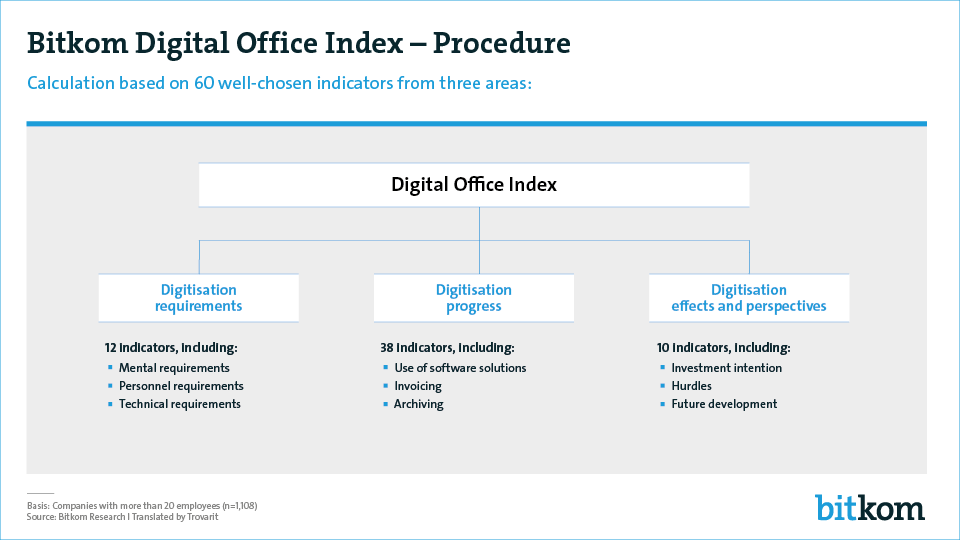
Digital Office Index User-types
Based on the results, four user-types with similar indicators were identified:
- 9% of the participants can be considered as digitisation pioneers with a DOI value of 64
- A digitisation progress that is above average can be certified to 41% of the participants, who achieved an index value of 54
- 28% of the participants have an index value of 48 and thus, a digitisation that is below average
- With an index value of 39, 23% of the companies are categorised as laggards


